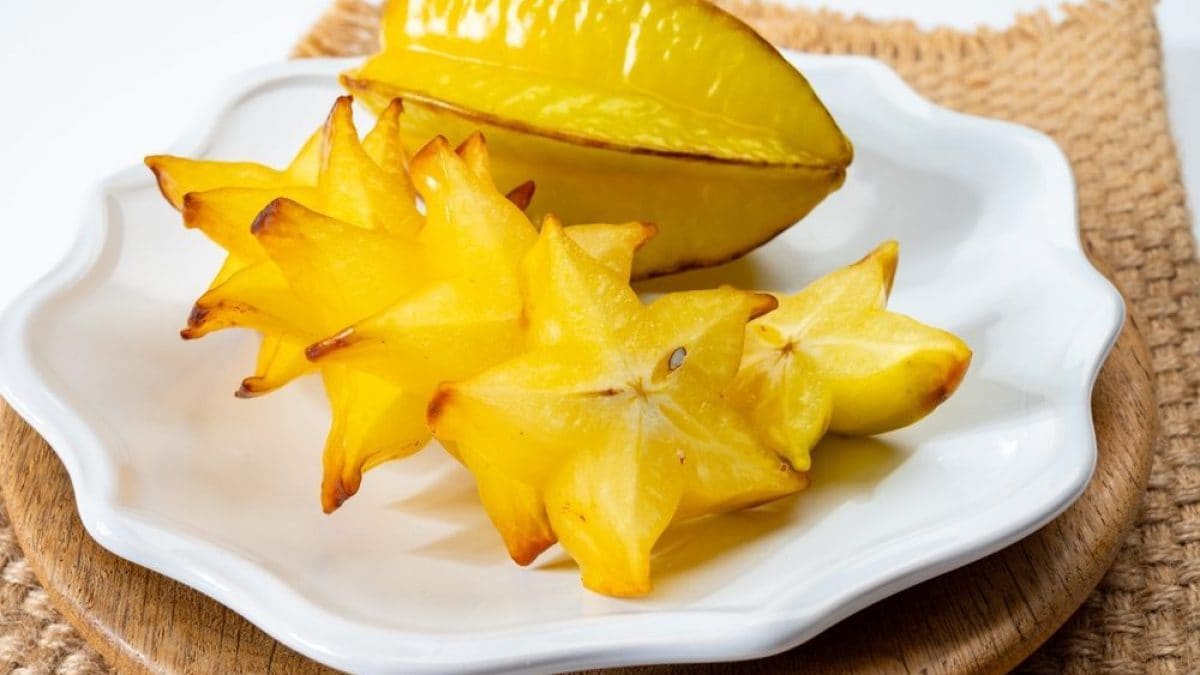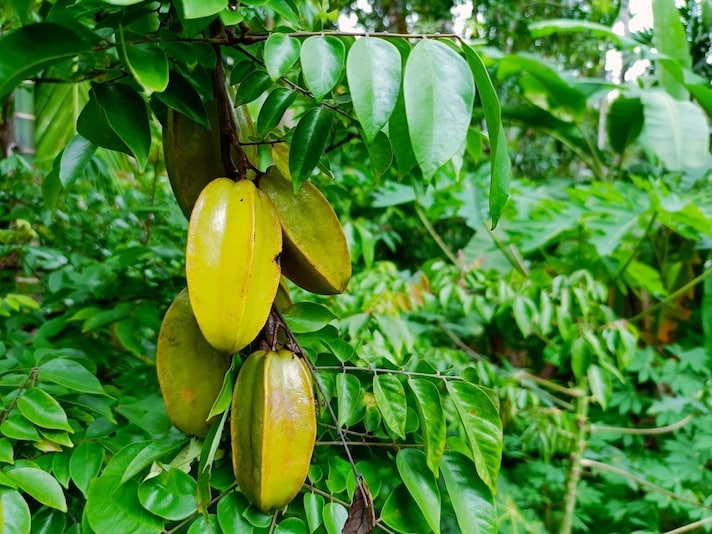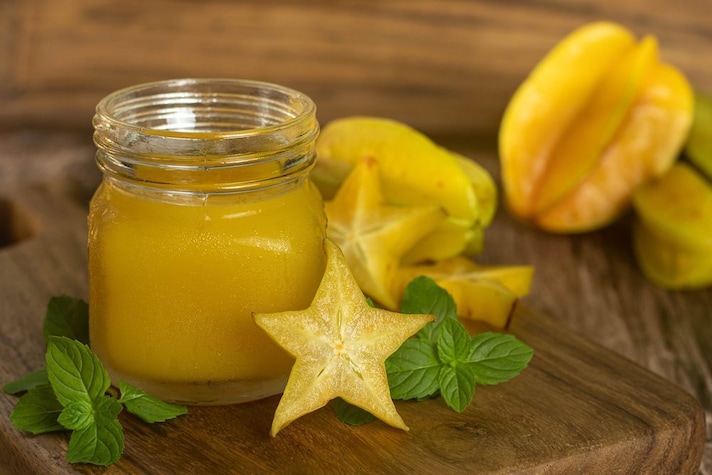
With its star shape that reveals itself when cut, its bright yellow color and thin, shiny skin, it seems designed specifically to amaze: we are talking about carambola, an exotic fruit that captivates with its naturally spectacular appearance, a bit like dragon fruit or durian, so strange they could come from another planet. Carambola is juicy, has a pleasantly sweet-tart flavor and in the kitchen it is enhanced in preparations that highlight its freshness and various benefits. Let's go and discover it.
What is Carambola: The Star-Shaped Fruit
Starfruit is the fruit of the Averrhoa carambola, a tropical plant belonging to the Oxalidaceae family. It is a medium-sized, evergreen tree, native to South and Southeast Asia, now also cultivated in other areas of the world such as Brazil, as well as Spain and Italy; in the U.S. it is primarily grown in Florida, especially in South Florida because of its tropical and subtropical climate. In India, starfruit is a sacred fruit, presented in rituals, as well as used for therapeutic purposes in folk medicine, as an antipyretic and antihemorrhagic. It cannot go unnoticed due to its oblong, ribbed shape: once cut, the section takes on the appearance of a five-pointed star, and it is this characteristic that has always made it so curious and fascinating, so much so that in Anglo-Saxon countries it is known as starfruit. The peel is thin, shiny and of a color that, depending on the ripeness, ranges from green to bright yellow, with orange hues; The pulp reflects the external hues, has a firm, translucent texture, dotted with very few seeds. The flavor? Between sweet and tart, with notes reminiscent of grapes, pineapple, and citrus fruits.

Nutritional Properties: A Concentrate of Well-Being (With Some Caution)
Like tropical fruits in general, carambola boasts several beneficial properties. Light and refreshing, it is a fruit composed of over 90% water and is low in calories (31 kcal per 100 g). Its composition stands out for fiber (2.80 g per 100 g), vitamin C (34.4 mg per 100 g), and potassium (133 mg per 100 g), making it a useful food for protecting the immune system, promoting proper intestinal function, maintaining blood sugar levels, and controlling blood pressure. It is also rich in antioxidants, including flavonoids (143 mg per 100 g), such as quercetin and gallic acid, which help fight cellular aging.
Side effects? Star fruit is often included on lists of delicious and unusual foods that can be "poisonous" to humans. This is due to its high concentration of oxalic acid (which can lead to kidney stones and urinary tract inflammation) and caramboxin, a neurotoxin. If consumed in large quantities, these can cause serious harm. People with kidney or liver problems, as recommended by the National Kidney Foundation, are advised against consuming it, as these harmful substances would be more difficult for the body to eliminate than a healthy individual.

How Do You Eat Star Fruit?
One of the most interesting aspects of star fruit is that it is entirely edible, including the peel. After washing it carefully, simply slice it crosswise with a knife to obtain the star-shaped portions. You can enjoy it in bites, or use it as a decoration for fruit arrangements: the most common use is fresh, added to fruit salads, salads, yogurt, fruit juices, and smoothies. It also lends itself well as a garnish for cocktails and non-alcoholic drinks with a tropical feel. In Asian cuisine, where savory dishes tend to have sweet and sour and spicy flavors, star fruit is an ingredient in jams and chutney-type sauces, best served with meat and fish dishes. A very popular version is dried, with dehydrated star fruits eaten as a snack.
;Resize,width=767;)
